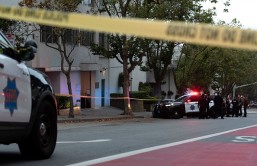Scotland is known not only for its Loch Ness monster mystery, but also for its awesome dancing lights -- Aurora Borealis. The Northern Lights recently made an appearance, dazzling stargazers from the different locations in the country.
Colorful light danced above Scotland few nights ago. Those who spotted Aurora Borealis gracing the night sky captured the amazing phenomenon on camera. Photos were taken from Moray, Caithness, and Aberdeenshire.
Aurora Borealis is active at certain times throughout the year, between March and April, September and October. If the sun's surface is more active -- meaning, if the sun ejected a massive amount of gas containing electromagnetic radiation -- people get better chances of seeing the Northern Lights.
Aurora Borealis and its southern light counterpart, Aurora Australis, are the results of the collision of electrons and the upper part of the Earth's atmosphere. The electrons are energized through acceleration, which then follows the magnetic field to the polar region.
The accelerated electrons collide with nitrogen atoms and oxygen. The process results in the electrons transferring their energy to the atmosphere, elevating the molecules to higher energy states. These then relax back to their lower energy state, releasing energy in the form of light.
The aurora comes in various shapes and may stretch for up to 80 to 500 km above Earth's surface. If the weather is good, Scotland, northern England and Northern Ireland are considered the best places to observe the aurora.
People in Scotland can expect seeing more of the Northern Lights in the coming days. The British Geological Survey, Aurora watch UK and US body Space Weather Prediction Centre stated that the chances of seeing Aurora Borealis in the coming days are high.








